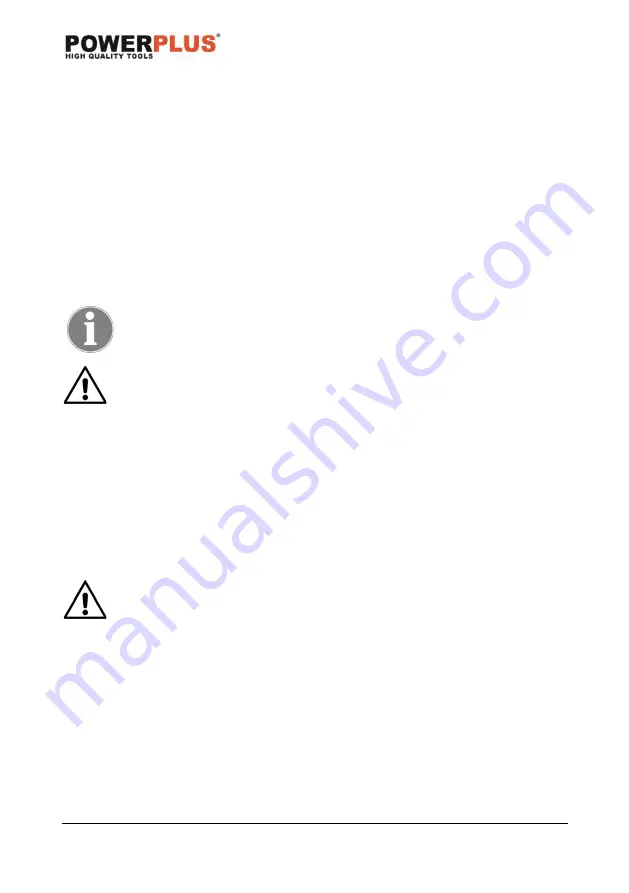
POWDPG75385
EN
Copyright © 2021 VARO
P a g e
|
9
www.varo.com
PINCHING the saw chain along the TOP of the guide bar may PUSH the guide bar rapidly back
toward the operator.
Any of these reactions may cause you to lose control of the saw, which could result in serious
personal injury.
▪
With a basic understanding of kickback, you can reduce or eliminate the element of
surprise. Sudden surprise contributes to accidents.
▪
Keep a good firm grip on the saw with both hands, the right hand on the rear handle, and
the left hand on the front handle, when the engine is running. Use a firm grip with thumbs
and fingers encircling the chain saw handles. A firm grip will help you reduce kickback and
ma
intain control of the saw. Don’t let go.
▪
Make sure that the area in which you are cutting is free from obstructions. Do not let the
nose of the guide bar contact a log, branch, or any other obstruction which could be hit
while you are operating the saw.
▪
Cut at high engine speeds.
▪
Do not overreach or cut above shoulder height.
▪
Follow manufacturer’s sharpening and maintenance instructions for the saw chain.
▪
Only use replacement bars and chains specified by the manufacturer or the equivalent.
NOTE: Low-kickback saw chain is a chain that has met the kickback
performance.
WARNING: Kickback can lead to dangerous loss of control of the chain saw
and result in serious or fatal injury to the saw operator or to anyone standing
close by. Always be alert. Rotational kickback and pinch-kickback are major
chain saw operational dangers and the leading cause of most accidents.
10 ASSEMBLY
10.1
Assembly of the device (Fig.2)
▪
Interlock the end of the hexagonal aluminum pip of the telescopic tube (20) and the end of
the tube below the saw head (17) up to the stop. Whilst interlocking the two, ensure that
the nose (20a) of the hexagonal aluminum pipe fits into the nut (17a) at the end of the
tube.
▪
Fasten both parts using the shaft coupling (19).
Always wear gloves when handling the bar and chain; these components are
sharp and may contain burrs.
Never touch or adjust the chain while the motor is running. The saw chain is
very sharp; always wear protective gloves when performing maintenance to
the chain to avoid possible serious lacerations.
10.2
To assemble the chain and bar (fig. 3-5)
▪
Unscrew the locking wheel (9) and remove the chain sprocket cover (11) (Fig. 3).
▪
Spread out the saw chain (1) in a loop in a way that the angled cutting edges of the chain
links are aligned clockwise.
▪
Place the saw chain (1) into the blade groove.
▪
Rotate the tension wheel (10) anticlockwise to align the chain sprocket cover (11) with the
mark on the tension wheel (10). (Fig.4 )
▪
Refit the cover (11), fit the rear of the cover and then the front. Ensure pin is located in
position, Slightly tighten the locking wheel (9). Do not tighten the locking wheel (9)
completely, saw chain tensioning is required first.


































